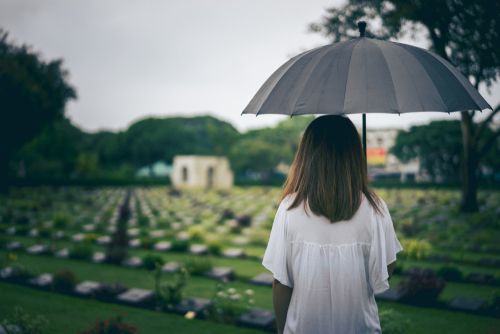 Cultures and religions have tried to explain death as well as provide comfort and assurance. They treat death as both a personal and community affair. Memorial customs often exist to provide solace to the survivors, and Judaism is no exception. As a structured process with multiple stages, Judaism’s mourning period allows room for those left behind to grieve, come to terms with their losses, and slowly return to normal life.
Cultures and religions have tried to explain death as well as provide comfort and assurance. They treat death as both a personal and community affair. Memorial customs often exist to provide solace to the survivors, and Judaism is no exception. As a structured process with multiple stages, Judaism’s mourning period allows room for those left behind to grieve, come to terms with their losses, and slowly return to normal life.
Origins in the Torah and Talmud
Jewish mourning traditions come from both the Torah and rabbinic texts. ReformJudaism.org specifically describes shiva, a key stage in the grieving process. In Sanhedrin 108b, the Talmud places a seven-day mourning period for Methuselah within the context of the great flood. Genesis 50:10 also mentions Joseph’s seven-day grieving for his father Jacob. Meanwhile, Chabad discusses other passages such as Leviticus 10:20, in which Moses’s brother Aaron refuses to eat the daily sacrificial offering when his sons died.
Avelut: The Mourning Period
Shiva.com briefly discusses avelut, which translates from Hebrew as “mourning.” Avelut consists of minhagdim, which the Encyclopedia Britannica describes as religious traditions considered accepted as binding, and mitzvah, which are commandments set down in the Torah. First-degree relatives such as parents, children, spouses, and siblings must observe avelut after a close loved one dies. It consists of three, four, or five stages depending on the source you consult, but these sources name the same parts of the process:
- Aninut: the grieving before burial
- Shiva: seven days of mourning after the burial
- Sheloshim: 30 days of mourning that include shiva
Mourning can extend through a full year after shiva, which encompasses the sheloshim period. During this time, the bereaved slowly return to regular life. However, the year-long period is mostly observed by people who’ve lost a parent.
Grief and Healing in Stages
You’ve probably heard about the five stages of grief: denial, anger, bargaining, depression, and acceptance. Denial is usually characterized as a feeling of numbness in which nothing makes sense. Chabad explains that avelut’s first stage, aninut, describes a “numbing, paralyzing grief” that consumes the family. Burial arrangements must be made, so they are exempt from religious obligations such as prayer. Jewish funerals usually take place within 24 hours of death.
Immediately following aninut is shiva, the seven days during which the community comforts the mourners and sees to their needs. My Jewish Learning comments that the bereaved remain in their homes, with friends and distant family visiting and bringing food. A shiva minyan service is held each day, allowing mourners to gather and pray. The shiva also permits the grieving family to understand and accept their loss without worrying about hectic day-to-day life.
Sheloshim, which means “thirty days” in Hebrew, includes shiva plus the weeks immediately after it. Mourners typically start returning to work and daily responsibilities during this period, but they won’t participate in parties, concerts, or similar forms of amusement. They may also recite the Kaddish, or mourner’s prayer, during both shiva and sheloshim. Sheloshim may end with a special shiva minyan and possibly a public memorial service. If a parent has died, the grieving individual will observe what’s called Shnat Ha-Evel. Recognizing the significance of this loss, this extended year gives the mourner more time to process grief while honoring the dead.
Death and Grief as Part of Human Life
The Tanakh’s third chapter of Ecclesiastes stresses that there’s “a time for weeping and a time for laughing, a time for wailing and a time for dancing.” Jewish tradition treats the loss of close family as a wound. Healing that wound requires rest, a reprieve from daily life, and care from those whom the mourner trusts. In this way, avelut is more than religious custom: It is an essential part of recovery for a grieving individual.